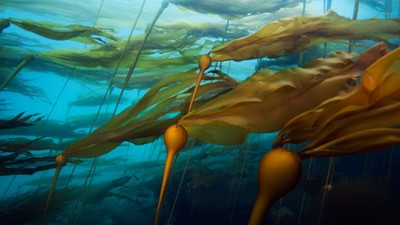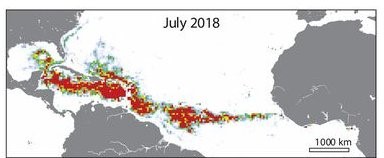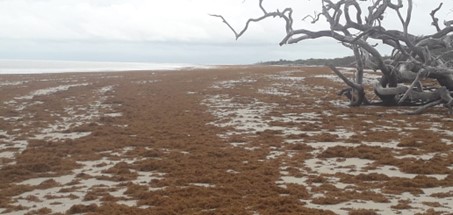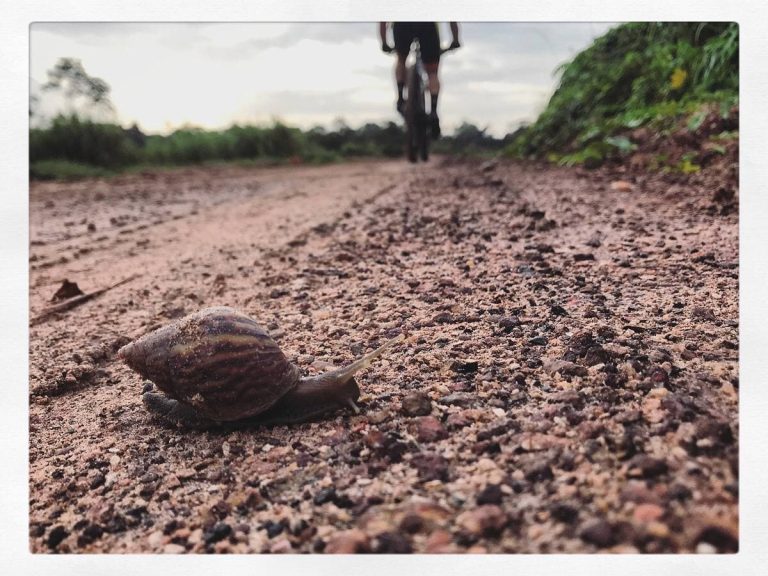Several industries are hidden into the impressive potentials of brown algae
It doesn’t matter whether you are, if you enjoy going to the beach, you’ve surely noticed the striking presence of marine macroalgae. Unlike their microscopic cousins, macroalgae display true fronds resembling delicate, translucent fabrics that sway with the tides and stand out due to their diverse shades of brown, green, and red. They can even exhibit iridescence, making them curiously beautiful organisms. However, due to their slimy or often rough and textured appearance, they can evoke various feelings in those who touch them. Their exotic appearance conceals extremely important functions for both humanity and coastal ecosystems.

Marine macroalgae efficiently create something quite rare in the water column: substrate. It might sound strange, but many aquatic organisms have life phases where they can’t actively swim or simply need to rest. They rely solely on their ability to cling to something, like an alga. As a result, the surfaces of macroalgal stems host highly diverse colonial communities, composed of various species of viruses, bacteria, worms, mollusks, crustaceans, starfish, fish larvae, and even mammals. Additionally, they secrete rich carbohydrates, nutrients, and oxygen that sustain all these forms of life. Therefore, if you wish to not only appreciate the splendor of the sunset by the breakwater, but also dive or even fish for sustenance, it is highly recommended to seek beaches with abundant macroalgae. There is even a theory that suggests one of the routes through which humanity entered the American continent thousands of years ago was by following the presence of algae along the coastline, the “Kelp Highway”1.

When Sargassum accumulates on beaches in the Caribbean and Northern Brazil, they suffocate turtle nests and mangroves, hinder the fishing industry, and as they rot on the sand, harm local tourism.
Kelps are the largest and most impressive macroalgae. Often in shades of brown and gold, they have individuals that can reach up to 60 meters in length2, making them the most elongated organisms in the marine environment. Coincidentally or not, marine giants and terrestrial giants, kelps and sequoias, are easily found on the coast of California. Analogous to their terrestrial counterparts, kelps form dense forests, but these resemble tropical forests due to their rich complexity and biodiversity.
The significant biomass of kelps represents a substantial amount of carbon dioxide that they remove from the air. Through photosynthesis, kelps convert the main driver of anthropogenic climate change not only into valuable vitamins and antioxidants but also into long, recalcitrant molecules that are exuded at a rate comparable to their own weight each day, ending up immobilized on the seafloor for hundreds of years. Kelps have been long-standing allies of humanity, but we are not living up to their contributions.
Unfortunately, our carbon dioxide production far surpasses the capacity of all forests, not just submerged ones, to absorb it. This has caused various global climate changes that are now undeniable facts, especially evident in the significant decline of large kelp populations on the west coast of North America. Scientists are working on a global scale to try to reverse this scenario. When it comes to kelp loss, the problem is exponentially larger since they are among the best tools we have to combat this phenomenon.

While the problem in the Pacific is decline, an opposite scenario is happening in the Atlantic. Since 2011, a belt of over 8,000 kilometers of Sargassum has been growing alarmingly each year. Although not a kelp, macroalgae of this species can multiply rapidly in open seas, reaching thousands of tons. When they accumulate on beaches in the Caribbean and Northern Brazil, they suffocate turtle nests and mangroves, hinder the fishing industry, and as they rot on the sand, harm local tourism. The exact cause of this phenomenon isn’t yet certain, but it’s suspected that riverine discharges of fertilizers from agro-livestock industries at the mouths of the Mississippi, Amazon, and Niger rivers might stimulate this excessive growth. This may also be intimately related to climate change and over-exploitation of land3.

IBPBio knows that brown algae are very important for our coastline and is already planning out a survey of the main points of occurrence of these species at coast line of Maranhao State, in order to map the potential for preservation and also for generating income from mariculture of these fantastic organisms. The fucoidan/alginate, pigments and natural plant fertilizer markets are still incipient in Brazil, but can be key consumers of this biomass and contribute for the conservation of the biodiversity of Brazilian coast. We also have partnerships with several national and international research groups (UWM, UFSC, USP, FURG) to develop projects aimed at understanding how and when Sargassum algae will reappear on our coast and what to do with this huge biomass.
If you want to know more about this and other IBPBio projects related to the sea, get in touch with us.
References:
1. Erlandson, J. M. et al. The Kelp Highway Hypothesis: Marine Ecology, the Coastal Migration Theory, and the Peopling of the Americas. J. Isl. Coast. Archaeol. 2, 161–174 (2007).
2. Abbott, I. A. & Hollenberg, G. J. Marine Algae of California. (Stanford University Press, 1976).
3. Wang, M. et al. The great Atlantic Sargassum belt. Science 364, (2019).


